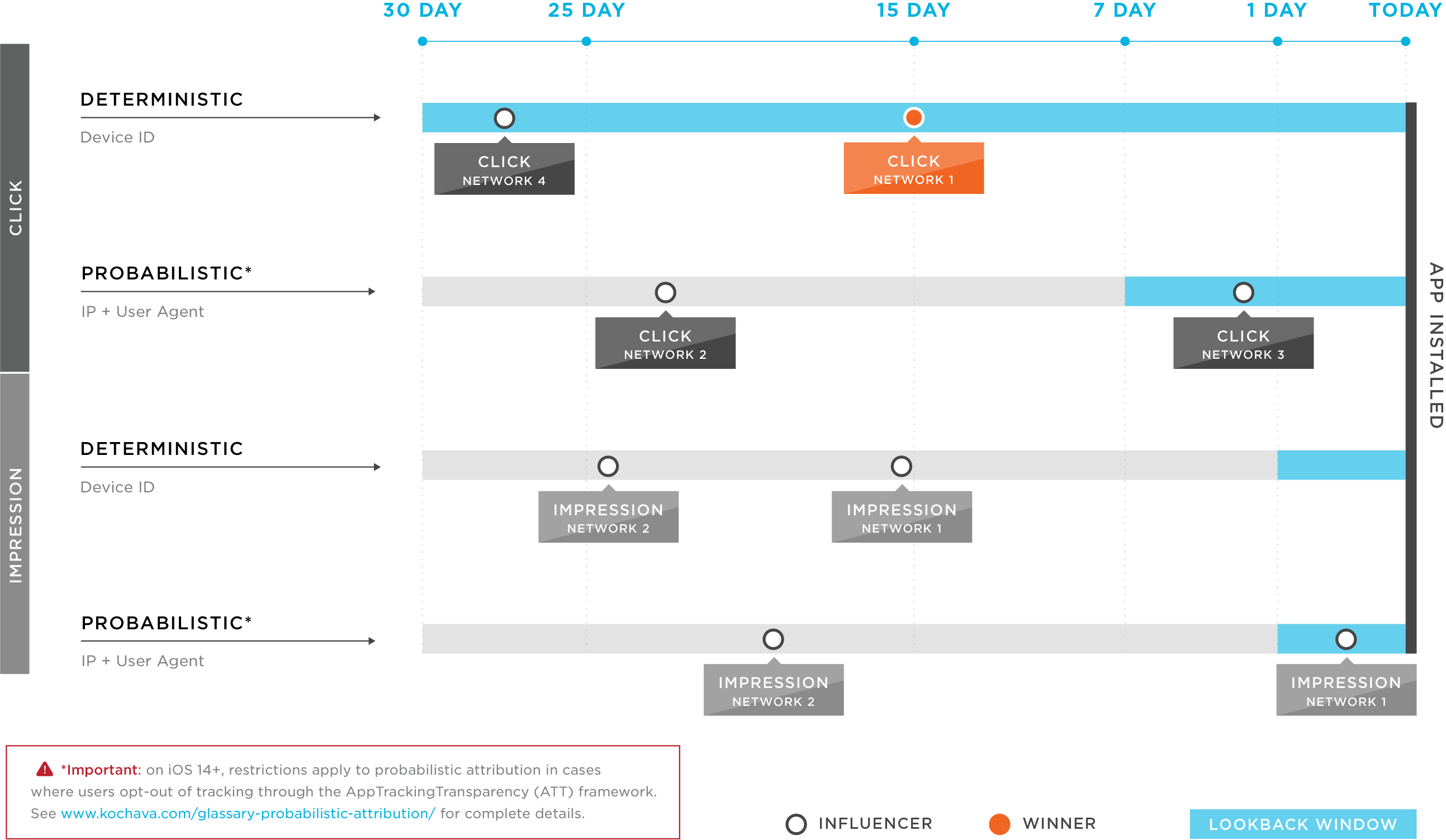Know where your users are coming from
For all of the work that goes into developing an app, it won’t reach an audience without marketing. New app developers and marketers may start out advertising on large platforms like Google and Facebook, but as you expand your marketing to reach new audiences, you need attribution performed by a mobile measurement partner (MMP) like Kochava.
What is attribution?
Attribution seems complicated, but with the right MMP, it doesn’t have to be. When new marketers start to market an app, many naturally gravitate to advertising with Google and/or Facebook, two of the biggest advertising platforms in the world. While you will find great success with those platforms, advertising on them alone is not a long-term solution.
To reach new audiences means working with multiple ad partners beyond mobile advertising but also omni-channel (eg, desktop, outdoor signage, television, etc.). Each partner has its own reporting technique, and to keep up with more than one will get complicated quickly. With an MMP software development kit (SDK) like Kochava’s, marketers can clearly see which partners drove what installs/conversions on one platform and then begin to analyze the quality and what messaging worked, and ultimately determining what the return on investment (ROI) was.

The above image is of the attribution waterfall or hierarchy and shows clicks and impressions. Attribution is first given to device matches that are deterministic. Probabilistic matches (see iOS 14+ restrictions) use other device identifiers to perform attribution.
Apple’s new data privacy policy and attribution
Attribution will vary with iOS campaigns, and it’s important to understand the changes coming with iOS 14.5. In June of 2020, Apple upturned advertising by announcing its AppTrackingTransparency (ATT) framework. This means that once iOS 14.5 rolls out some time this spring, app developers must prompt users to give consent to ad tracking. If the user gives consent (opts in), attribution will be performed as it always has. If the user does not give consent (opts out), attribution options are limited to Apple’s SKAdNetwork which will perform anonymous attribution that protects the identity of the user. This is a huge change and will limit the type of data and analysis possible. It’s imperative to understand how to obtain iOS campaign data from SKAdNetwork since the majority of iOS users are expected to opt-out. To learn more about ATT and SKAdNetwork, visit our iOS resource page.
Apple’s User Privacy and Data Use policy may be difficult to navigate, but we’ve made it our priority to understand and create tools and support materials to help marketers comply. To learn more about how these changes affect advertising and measurement, download our free guide on privacy-compliant attribution for iOS 14.5.
Types of attribution: last click, multi-touch, and fractional attribution
There are different types of attribution, but the most common form applied to mobile marketing is last-click attribution. What this means is that in an ad campaign with multiple ad partners, the partner with the last click wins the attribution.
Winning the last click before a user installs an app doesn’t mean other partners in the campaign didn’t have any influence. It’s common that a user saw an ad in a number of locations before taking action and clicking on an ad.
To see which partners were influential and had a touchpoint is what multi-touch attribution (MTA) is all about and may be a valuable way to plan your next ad campaigns. To give partial credit to those influential partners that may have eventually led to an install or conversion is what fractional attribution entails.
But wait, there’s more! Self-attributing networks
The idea of last-click attribution seems straightforward. A user sees an ad, perhaps multiple times, and eventually clicks and takes action by installing the app or completing some other conversion in the app such as a purchase. If any of your media partners include Facebook, Twitter, Snapchat, and Google, these platforms handle their own attribution and are referred to as self-attributing networks (SANs). They will claim installs or conversions that occur on their platform. If your media mix includes SANs plus other partners, attribution may overlap. To learn more about avoiding an overlapping media mix, read more about it here.
Attribution is the foundation of mobile marketing
Without attribution, you won’t know how your ad campaigns perform, where your high-quality users are coming from, or your ROI. You would be driving blind without the ability to compare campaign performance. With an MMP like Kochava, you have an objective entity performing attribution—in other words, a single source of truth.
Don’t be afraid of attribution or think that you don’t need it when you’re starting out and working with one or two ad partners. Get over your fear of attribution because in marketing, “ignorance isn’t bliss.”
For more information, contact us, and we’ll help you get started in marketing your app.




